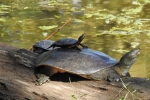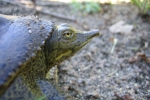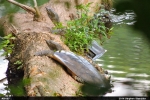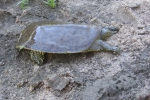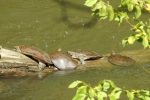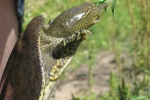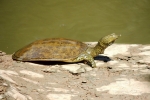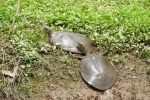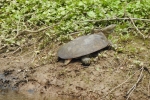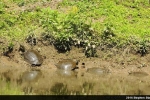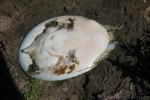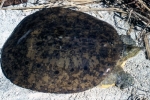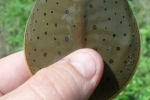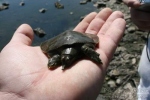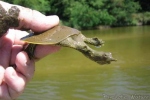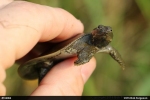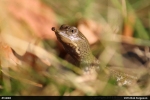Eastern Spiny Softshell Turtle
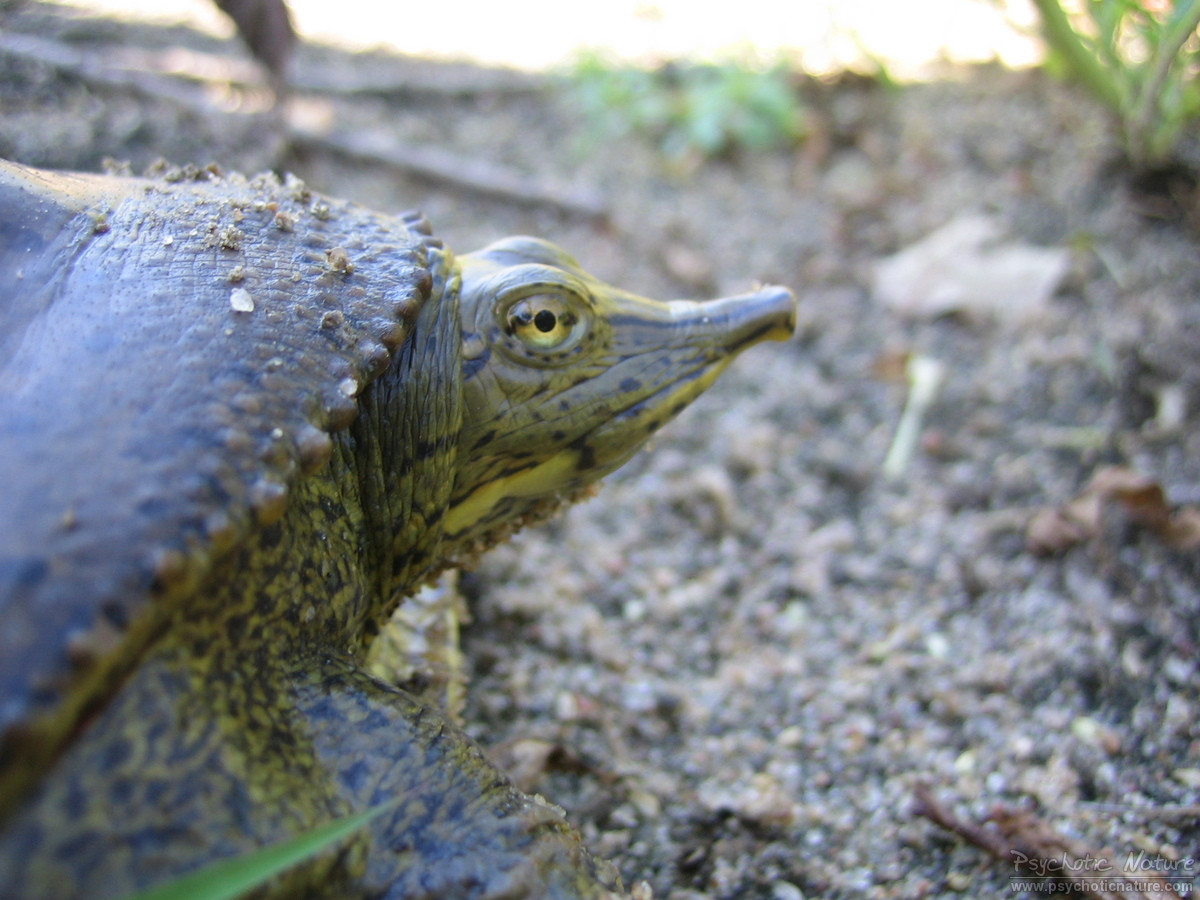
Scientific Name: Apalone spinifera
Size: 7-17 inches (18-43.2 cm)
Status: Species of special concern
Habitat:
Large rivers and lakes to small ponds and slow-moving creeks with a sandy or muddy bottom.
Description:
Medium to large sized aquatic species. The upper shell is light green to brown with circular marks on a smooth shell with no scutes. They have a snorkel like nose and light stripes in their face. Males are usually lighter colored and smaller than females. Females have spines along the leading edge of their shell.
- The carapace background color is tan to olive-brown and patterned with black irregular ocelli (eyelike spots) or dark blotches and a dark marginal line. The center of the ocelli is the same as the carapace background color.
- The carapace is bordered by a light band that is offset by a thin black line. The band is widest at the posterior end and narrows anteriorly.
- The plaston and fleshy parts of the body are immaculate white to yellowish white.
- The dorsal surface of the legs and venter of the feet are heavily mottled.
- The head and limbs are white, cream, olive to grey with dark spots and streaks.
- The head has a pair of white lines with dark borders that extend from the snout to the anterior border of the eyes, then to the posterior edge of the eyes and to the neck.
- The tail has two pairs of dark lines; one is dorsolateral and the other is ventral-lateral.
- The lips are yellowish with dark spotting.
- Medium to large sized aquatic species.
- Profile View – The carapace is flat and low; keelless
- Above View – The carapace is round to oblong in outline.
- The carapace and plastron lack horny scutes or plates.
- The plastron is slightly reduced and is soft, smooth, and leathery.
- The carapace is leathery and the surface is like sandpaper.
- The plastron is hingeless.
- Conical, spiny projections are found along the anterior margin of the carapace.
- The feet are strongly webbed.
- The forelimbs each have four conified anterbrachial scales on the anterior surface.
- The neck is very long.
- The head is conical, with a tubular snout that is truncated, with large nostrils.
- The carapace is lighter.
- The ocelli pattern is more defined.


- None
- Hulse, C. and McCoy C. J. and Ellen Censky ,1998. Amphibians and Reptiles of Pennsylvania and the Northeast. 241-244pp.
- Ernst, Carl H. and Lovich, Jeffrey E., and Barbour, Roger W. ,1994. Turtles of the United States and Canada. 113-123pp.
- Tom Diez
- Bob Ferguson
- Stephen Staedtler
- Don Becker (psychoticnature.com)
Heads up!
Please contribute your observation of this and other herps to the Pennsylvania Amphibian and Reptile Survey. Your help is needed.
